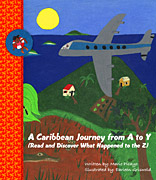There are thousands of magazines out there, ranging from animal care to zoos. Magazines can be informative or they can be an easy fun read for someone who doesn’t have time to read a whole newspaper. Most people buy or subscribe to a magazine that they relate to, such as an outdoors-savvy person would subscribe/read Outdoors. Yet what happens if on the off chance you wanted to make your own magazine that specifically targeted what you like- say books you enjoy? Who knows, maybe this will help spark the creation of an Editorial Campana magazine as well as a Campanita Magazine.
It used to be that you could create a magazine, but at a high cost. If you wanted to print your own magazine, the cost could start at about $2,000 dollars. That’s a lot of money for a magazine that probably wont get the same wide-spread attention as Maxium or People Magazine. But there is a light at the end of the tunnel. H.P. has created a new web-based service that will lower the price of creating a magazine. MagCloud, as the new service is called, “hopes to make it easier and cheaper to crank out a magazine than running photocopies at the local copy shop.” How is this possible you ask? According to the company, by charging about 20 cents per page (which is paid by ONLY when the customer orders a copy) magazines can be created for roughly $50.
This new program may help revolutionize the magizine industry. At a time when magazines are begining to decline due to the Internet and the abundance of free material.
For now it looks as though the magizine still has a function in our society. Magazines serve as a great outlet, especially for small companies and organizations looking to expand their visibilty (whether within the community or around the world). Programs such as MagCloud could help companies and organizations improve thie popularity while at the same time saving money (which is something that everybody is thinking about first).
H.P. understands that this new printing format may NOT work. The point is to see what type of mrket there is for personalized magazines. If there is none, H.P. plans to simply move on to another type of media.





 This application for your iPhone comes with a lot of great features. You can go to any page very easily and save your progress in case you need to come back to your book later. The settings section allows you to change the font size and style, change the way the pages turn (to give it amore realistic feeling), and change the screen color (black/white or reverse). And just like with the iPhone you can change from portrait to landscape depending on what you like better.
This application for your iPhone comes with a lot of great features. You can go to any page very easily and save your progress in case you need to come back to your book later. The settings section allows you to change the font size and style, change the way the pages turn (to give it amore realistic feeling), and change the screen color (black/white or reverse). And just like with the iPhone you can change from portrait to landscape depending on what you like better.
